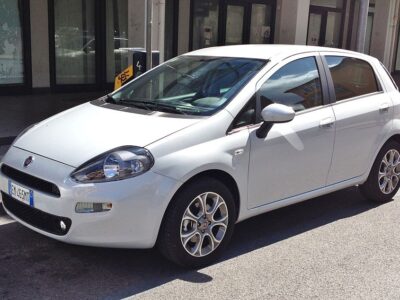
Maintaining the Fiat Punto's Battery Life and Charging System
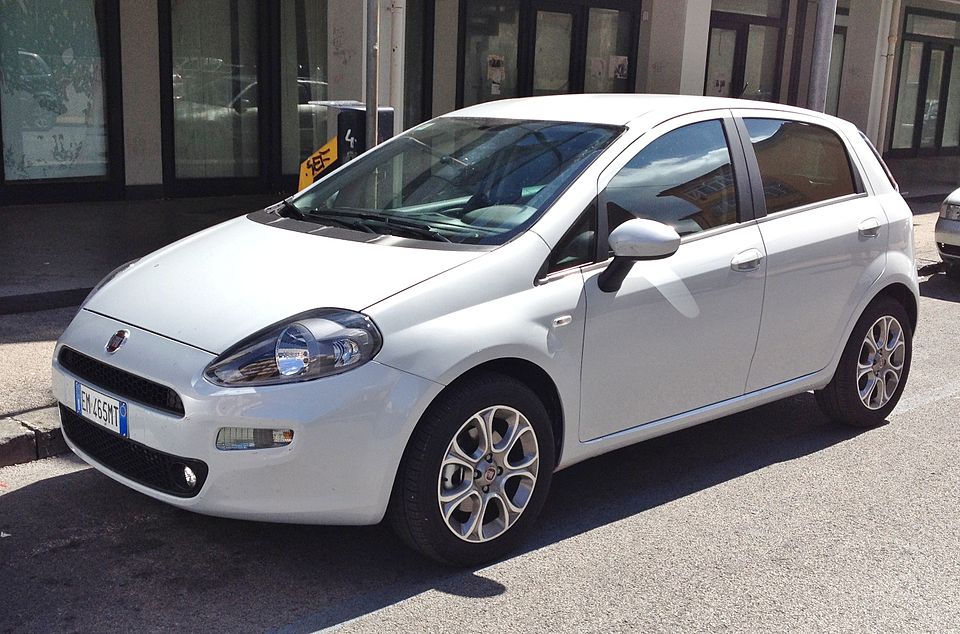
The Fiat Punto is a reliable and popular vehicle, but like all cars, its battery life and charging system require regular maintenance to ensure optimal performance. A well-maintained battery and charging system are crucial to prevent breakdowns and costly repairs. In this article, we will explore the importance of maintaining the Fiat Punto's battery life and charging system, including tips on how to check and maintain the battery, as well as troubleshooting common issues with the charging system to keep your vehicle running smoothly and efficiently. Regular checks can help identify potential problems.
Maintaining the Fiat Punto's Battery Life and Charging System
The Fiat Punto's battery life and charging system are crucial components that require regular maintenance to ensure the vehicle's optimal performance and longevity. A well-maintained battery and charging system can help prevent unexpected breakdowns, reduce the risk of damage to other electrical components, and maintain the overall health of the vehicle.
Checking the Battery Condition
Regularly checking the battery condition is essential to identify any potential issues before they become major problems. This involves inspecting the battery terminals for signs of corrosion, checking the electrolyte levels, and monitoring the battery's state of charge. By doing so, you can identify any issues early on and take corrective action to prevent damage to the battery and other electrical components. The battery condition can be checked using a multimeter or a battery tester.
Maintaining the Charging System
The charging system is responsible for recharging the battery and powering the vehicle's electrical components. To maintain the charging system, it's essential to check the alternator belt for signs of wear, ensure the alternator is functioning correctly, and inspect the wiring and connections for any signs of damage or corrosion. Regular maintenance of the charging system can help prevent issues such as overcharging or undercharging, which can damage the battery and other electrical components.
Best Practices for Battery Maintenance
To extend the life of the Fiat Punto's battery, it's essential to follow best practices for battery maintenance. This includes avoiding deep discharging, keeping the battery terminals clean, and ensuring the battery is properly secured. Additionally, it's recommended to check the battery's state of charge regularly and avoid leaving the vehicle's lights or accessories on for extended periods.
| Maintenance Task | Frequency | Description |
|---|---|---|
| Check battery condition | Every 3 months | Inspect battery terminals, electrolyte levels, and state of charge |
| Check alternator belt | Every 6 months | Inspect for signs of wear, cracks, or damage |
| Check charging system | Every 12 months | Inspect alternator, wiring, and connections for damage or corrosion |
What is the life expectancy of a Fiat Punto?

The life expectancy of a Fiat Punto largely depends on various factors such as maintenance, driving conditions, and model year. Generally, a well-maintained Fiat Punto can last for a considerable amount of time. The average lifespan of a Fiat Punto is around 150,000 to 200,000 miles, which translates to approximately 10 to 15 years.
Factors Affecting Life Expectancy
The life expectancy of a Fiat Punto is influenced by several factors. Proper maintenance is crucial in extending the lifespan of the vehicle. Regular servicing, oil changes, and replacement of worn-out parts can significantly contribute to the longevity of the car.
- Regular maintenance schedules
- Driving habits and conditions
- Model year and specifications
Common Issues Affecting Longevity
Some common issues can affect the longevity of a Fiat Punto. These include problems with the engine, transmission, and electrical systems. Addressing these issues promptly can help prevent further damage and extend the lifespan of the vehicle.
You may be interested in reading Common Fiat Punto Cooling System Issues and How to Fix Them
Common Fiat Punto Cooling System Issues and How to Fix Them- Engine problems such as oil leaks and overheating
- Transmission issues like slipping and hesitation
- Electrical faults and software glitches
Tips for Extending Life Expectancy
To extend the life expectancy of a Fiat Punto, several measures can be taken. Keeping the vehicle clean, both inside and out, can help prevent damage from dirt and debris. Additionally, driving smoothly and avoiding extreme temperatures can also contribute to the longevity of the car.
- Regularly washing and waxing the exterior
- Vacuuming and cleaning the interior
- Avoiding extreme driving conditions
What is the cost of battery in Fiat Punto?

The cost of a battery in a Fiat Punto can vary depending on several factors such as the model year, type of battery, and the supplier. Generally, the cost can range from $50 to $150.
Battery Types and Their Costs
The type of battery used in a Fiat Punto can affect the overall cost. There are mainly two types of batteries used: maintenance-free and low-maintenance batteries. The cost of a maintenance-free battery is generally higher than that of a low-maintenance one. Here are some factors that can influence the cost:
- The quality of the battery, with high-quality batteries being more expensive
- The brand of the battery, with well-known brands being pricier
- The capacity of the battery, with higher capacity batteries costing more
Factors Affecting Battery Cost
Several factors can influence the cost of a battery for a Fiat Punto. These include the model year of the vehicle, with newer models potentially requiring more advanced and expensive batteries. The supplier of the battery is also a significant factor, as different suppliers may offer the same battery at different prices. Here are some key factors to consider:
- The age and condition of the vehicle, as older vehicles may require more frequent battery replacements
- The type of driving the vehicle is used for, with frequent short trips potentially reducing battery life
- The climate the vehicle is driven in, as extreme temperatures can affect battery performance and lifespan
Replacement and Maintenance Costs
In addition to the initial cost of the battery, there are also costs associated with replacing and maintaining the battery. Labor costs for replacement can vary depending on the mechanic or service center. Regular maintenance, such as checking the battery terminals and electrolyte levels, can help extend the life of the battery. Here are some related costs to consider:
- Labor costs for battery replacement, which can range from $20 to $100
- Costs of any additional maintenance or repairs required due to battery failure
- The cost of testing the battery to determine if it needs to be replaced
Is it bad to leave a car battery charging too long?
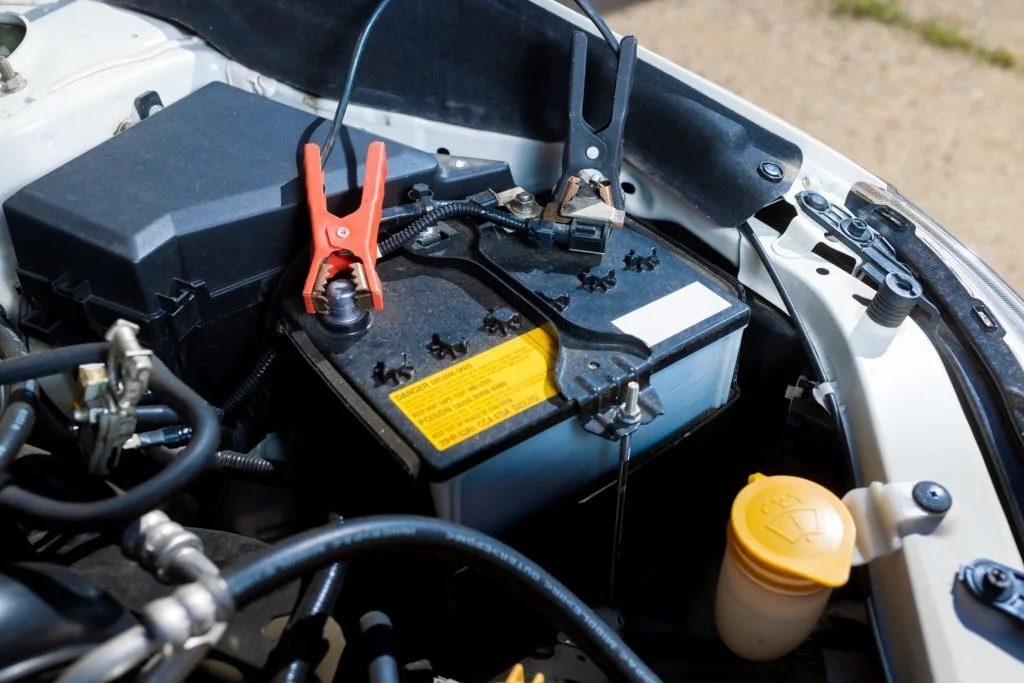
Leaving a car battery charging for an extended period can have both positive and negative effects, depending on the type of charger used and the battery's condition. Modern smart chargers are designed to prevent overcharging by switching to a maintenance or float charge mode once the battery is fully charged. However, older or lower-quality chargers might continue to supply a high charge current, potentially causing damage to the battery.
Effects of Overcharging on Car Batteries
Overcharging can lead to a reduction in the battery's lifespan and overall performance. When a battery is overcharged, the excess energy can cause the electrolyte to boil, leading to a loss of water and potentially damaging the internal components. This can result in a range of issues, including:
You may be interested in reading Common Fiat Punto Cooling System Issues and How to Fix Them
Common Fiat Punto Cooling System Issues and How to Fix Them Diagnosing and Repairing Fiat Punto Suspension Clunking Noises
Diagnosing and Repairing Fiat Punto Suspension Clunking Noises- Reduced battery life due to the degradation of internal components.
- Increased risk of battery explosion or fire due to the buildup of hydrogen gas.
- Damage to the battery's external casing or terminals.
Precautions to Avoid Overcharging
To avoid the risks associated with overcharging, it's essential to take certain precautions when charging a car battery. This includes using a high-quality charger that is designed for the specific type of battery being charged. Additionally, it's crucial to monitor the charging process and adjust the charger's settings as needed. Some key precautions include:
- Using a smart charger that can detect when the battery is fully charged and switch to a maintenance mode.
- Monitoring the battery's voltage and temperature during the charging process.
- Avoiding the use of high-current chargers for extended periods.
Best Practices for Charging Car Batteries
To ensure the longevity and performance of a car battery, it's essential to follow best practices when charging. This includes choosing the right charger for the job and being mindful of the charging time and conditions. Some best practices to keep in mind include:
- Using a charger that is specifically designed for the type of battery being charged.
- Following the manufacturer's instructions for the charger and battery.
- Keeping the battery and charger in a well-ventilated area to prevent the buildup of hydrogen gas.
Why was the Fiat Punto discontinued?

The Fiat Punto was discontinued due to a combination of factors, primarily driven by declining sales and the need for Fiat to focus on more profitable models. The Punto, which was first introduced in 1993, had undergone several updates and redesigns over the years, but it ultimately failed to keep pace with the evolving demands of the European market. The rise of crossover SUVs and the increasing competition in the supermini segment made it challenging for the Punto to remain competitive.
Decline in Sales
The sales of the Fiat Punto had been declining steadily over the years, making it less viable for Fiat to continue producing the model. Some of the key factors contributing to this decline include:
- Increased competition from other supermini models, such as the Volkswagen Polo and the Ford Fiesta.
- The rise of crossover SUVs, which drew potential customers away from traditional hatchbacks like the Punto.
- The Punto's outdated design and lack of modern features, which made it less appealing to younger buyers.
Shift in Market Trends
The European automotive market underwent significant changes in the late 2010s, with a shift towards crossover SUVs and electric vehicles. As a result, Fiat had to reassess its model lineup and prioritize models that were better suited to the changing market trends. Some of the key market trends that affected the Punto include:
- The growing demand for SUVs and crossovers, which led to a decline in sales for traditional hatchbacks.
- The increasing importance of electrification and emissions regulations, which made it necessary for Fiat to focus on models with more modern powertrains.
- The need for Fiat to differentiate its model lineup and focus on more niche or specialized models.
Product Lineup Rationalization
As part of its efforts to rationalize its product lineup, Fiat decided to discontinue the Punto and focus on other models that were more profitable and better positioned for future growth. Some of the key considerations behind this decision include:
- The need to simplify Fiat's model lineup and reduce production costs.
- The desire to focus on models with more growth potential, such as the Fiat 500 and the Fiat Panda.
- The opportunity to reallocate resources to other areas of the business, such as electrification and technology development.
Frequently Asked Questions
What are the common causes of battery drain in a Fiat Punto?
The common causes of battery drain in a Fiat Punto include leaving headlights or interior lights on, a faulty alternator, a malfunctioning alarm system, and a weak or old battery. Other factors like extreme temperatures, short trips, and electrical system issues can also contribute to battery drain. Regular checks can help identify these issues.
How often should I check the Fiat Punto's battery terminals?
It is recommended to check the Fiat Punto's battery terminals every 6 months for signs of corrosion or wear. Cleaning the terminals with a wire brush and applying a corrosion inhibitor can help maintain good electrical contact. Regular checks can prevent issues like slow engine start or electrical system malfunctions.
You may be interested in reading Common Fiat Punto Cooling System Issues and How to Fix Them
Common Fiat Punto Cooling System Issues and How to Fix Them Diagnosing and Repairing Fiat Punto Suspension Clunking Noises
Diagnosing and Repairing Fiat Punto Suspension Clunking Noises Fiat Punto ECU and Electrical Problems: Troubleshooting Guide
Fiat Punto ECU and Electrical Problems: Troubleshooting GuideCan I charge my Fiat Punto's battery while it's still connected to the vehicle?
Yes, you can charge your Fiat Punto's battery while it's still connected to the vehicle, but it's crucial to follow proper safety precautions. Ensure the charger is set to the correct voltage and current rating for your battery type. However, it's generally recommended to disconnect the battery before charging to avoid potential electrical surges or damage to the vehicle's electrical system.
What are the signs of a failing alternator in a Fiat Punto?
Signs of a failing alternator in a Fiat Punto include dim or flickering headlights, a dead battery, and unusual noises from the alternator. Other indicators include dashboard warning lights, electrical system malfunctions, and difficulty starting the engine. If you experience any of these symptoms, it's essential to have your alternator checked and replaced if necessary to avoid further damage.
If you want to know other articles similar to Maintaining the Fiat Punto's Battery Life and Charging System you can visit the category Fiat Punto.
Deja una respuesta

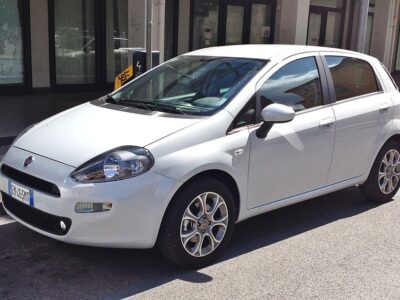
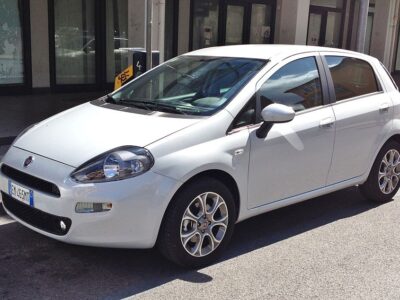
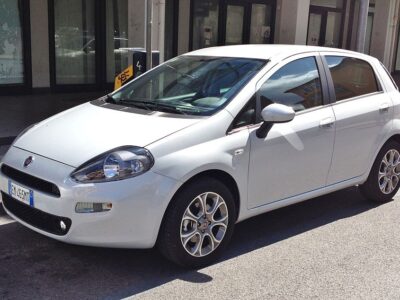


More content of your interest